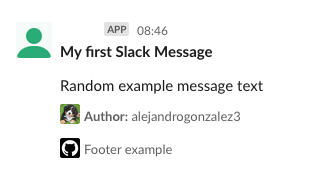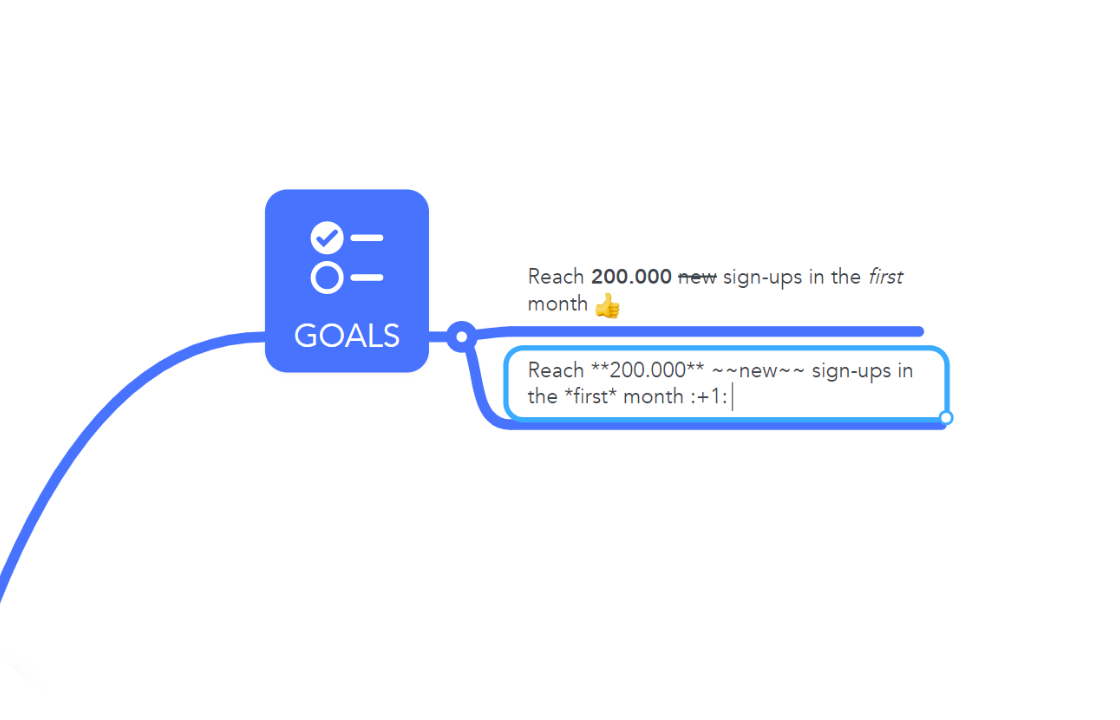This tutorial covers Markdown lists - Ordered, unordered, syntax with examples. Message parser for Slack raw messages to Github Markdown Syntax - canozokur/slacktomd.
Вы находитесь на странице справочной информации о версии:
- 6.3
When you are authoring, the content fragment editor uses markdown syntax to allow you to easily write content:
You can define:
To create a header by placing a hash tag (#) in front of the heading. One hash tag (#) is used for an H1, two hash tags (##) for a H2 etc. You can use up to 6 hash tags. For example:
#This is an H1
##This is an H2

###### This is a H6
Optionally, you can create a H1 by underlining the text in equal signs and create a H2 by underlining the text in minus signs. For example:
This is an H1

This is an H2
--------------
A paragraph is simply one or more consecutive lines of text, separated by one or more blank lines. A blank line is a line containing nothing but spaces or tabs. Normal paragraphs should not be indented with spaces or tabs.
A line break is created by ending a line with two or more spaces then a return.
You can create inline and reference links.
In both styles, the link text is delimited by square brackets [].
These are examples of inline links:
This is [an example](http://example.com/ 'Title') inline link.
This is [an example of an email link](emailto:myaddress@mydomain.info)
[This link](http://example.net/) has no title attribute.
A reference link has the following syntax:
Hey you should [checkout][0] this [cool thing][wiki] that I [made][].
[0]: http://www.google.ca
[wiki]: http://www.wikipedia.org
[made]: http://www.stackoverflow.com
The syntax for images is similar to the links. You can create inline and reference links.
For example, an inline image has the following syntax:


The syntax includes:
- An exclamation mark: !;
- followed by a set of square brackets, containing the alt attribute text for the image;
- followed by a set of parentheses, containing the URL or path to the image, and an optional title attribute enclosed in double or single quotes.
A Reference-style image has the following syntax:
![Alt text][id]

Where “id” is the name of a defined image reference. Image references are defined using syntax identical to link references:
[id]: url/to/image 'Optional title attribute'
You can quote text by adding the > symbol before the text. For example:
>This is block quotes
>asdhfjlkasdhlf
>asdfahsdlfasdfj
You can have nested block quotes. For example:
> This is the first level of quoting.
>
> > This is nested blockquote.
>
> Back to the first level.
You can create both ordered and unordered lists.

To create an unordered list, use the * symbol before the items in the list. For example:
* item in list
* item in list
* item in list
To create an ordered list, add the numbers, followed by a period, before each item in the list. For example:
1. First item in list.
2. Second item in list.
3. Third item in list.
You can add italic or bold styling to your text.
To can add italics as follows:
*single asterisks*
Remover senha de arquivo rar. _single underscores_
Keyboard shortcut: Ctrl-I (Cmd-I)
You can bold text as follows:
**double asterisks**
__double underscores__
Keyboard shortcut: Ctrl-B (Cmd-B)
To indicate a span of code, wrap it with backtick quotes (`). Unlike a pre-formatted code block, a code span indicates code within a normal paragraph.
For example:
Use the `printf()` function.
Code blocks are typically used to illustrate source code. You can create code blocks by indenting the code using a tab or a minimum of 4 spaces. For example:
This is a normal paragragh.
This is a code block.
You can use backslash escapes to generate literal characters which have special meaning in formatting syntax. For example, if you wanted to surround a word with literal asterisks (instead of an HTML <em> tag), you can use backslashes before the asterisks, like this:
*literal asterisks*
Backslash escapes are available for the following characters:
backslash
` backtick
* asterisk
_ underscore
{} curly braces
[] square brackets
() parentheses
# hash mark
+ plus sign
- minus sign (hyphen)
Slack Markdown Syntax Example
. dot
Slack Markdown Syntax Python
Правовые уведомления | Политика конфиденциальности в сети Интернет
